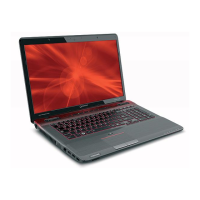
Do you have a question about the Toshiba X770-BT5G24 and is the answer not in the manual?
| Processor | Intel Core i7-2670QM |
|---|---|
| RAM | 8GB |
| Storage | 750GB HDD |
| Graphics | NVIDIA GeForce GTX 560M |
| Display | 17.3-inch |
| Operating System | Windows 7 Home Premium |
| CPU Model | Intel Core i7-2670QM |
| Storage Size | 750GB |
| Graphics Card Model | NVIDIA GeForce GTX 560M |
| Display Resolution | 1600 x 900 |
| RAM Type | DDR3 |
| Weight | 7.5 lbs |
| Battery | Lithium-ion |
| Operating System Version | Windows 7 Home Premium 64-bit |
Steps for turning on the computer and loading the operating system.
Guidance on initial software setup using the Setup Wizard.
Step-by-step instructions for installing a memory module.
Procedure for safely removing a memory module.
Restores the original factory image, deleting all data and partitions.
Recovers factory software and attempts to save user data.
Recovers the C: drive while keeping other partitions intact.
Restores the C: drive to factory state, allowing custom partition sizing.
Instructions for creating recovery media for system restoration.
Choosing display modes using hot keys.
Overview of options like Shut down, Hibernate, and Sleep.
Procedure to completely shut down the computer.
Explanation of keyboard components: character, control, function, and special keys.
Methods to start programs via icons, Start menu, or Search.
Details on the removable Lithium-Ion battery and its recharging.
Procedure for charging the battery and using specified chargers.
How to charge the battery and conditions affecting charging.
How to interpret battery status indicators.
Actions to take when battery power is critically low.
Choosing predefined Power Plans or creating custom combinations.
Instructions for replacing the computer's battery pack.
Step-by-step guide to safely remove the battery.
Procedure for inserting a charged battery.
Tips and safety precautions for battery maintenance.
Methods for maintaining battery health.
Central hub for system functions and settings.
Information on setting passwords for file protection and access.
How a supervisor password prevents unauthorized hardware changes.
Information on user passwords for power-on protection.
Troubleshooting steps for unresponsive programs.
Issues encountered during system startup.
Troubleshooting unexpected OS behavior or startup failures.
How to check and manage device configurations.
Troubleshooting errors related to memory modules.
Understanding power issues and their relation to batteries.
Troubleshooting keyboard-specific issues.
Solutions for blank screens or incorrect visual output.
Troubleshooting drive access and sector errors.
Solutions for issues with the optical drive.
Troubleshooting steps for issues with sound output.
Common printer issues and solutions.
Troubleshooting Wi-Fi® connectivity issues.
Steps to fix problems playing DVDs or Blu-ray Disc™ movies.
Backing up settings, data, and creating restore points.
Methods for backing up computer data or the entire system.
Steps to take if problems persist, requiring technical support.
Resources for hardware-related support.
Description of Hot Key Cards for system functions.
List of available hot key functions.
Using hot key for Sleep mode.
Using hot key for Hibernation mode.
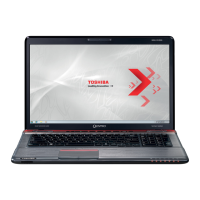


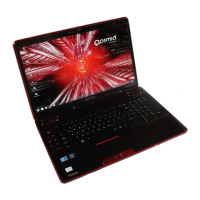

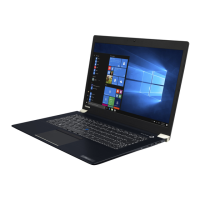
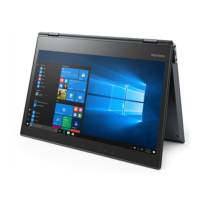

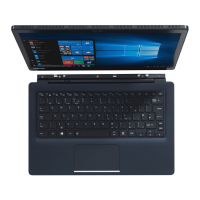
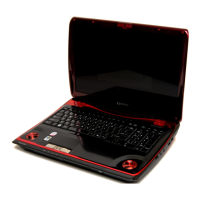


